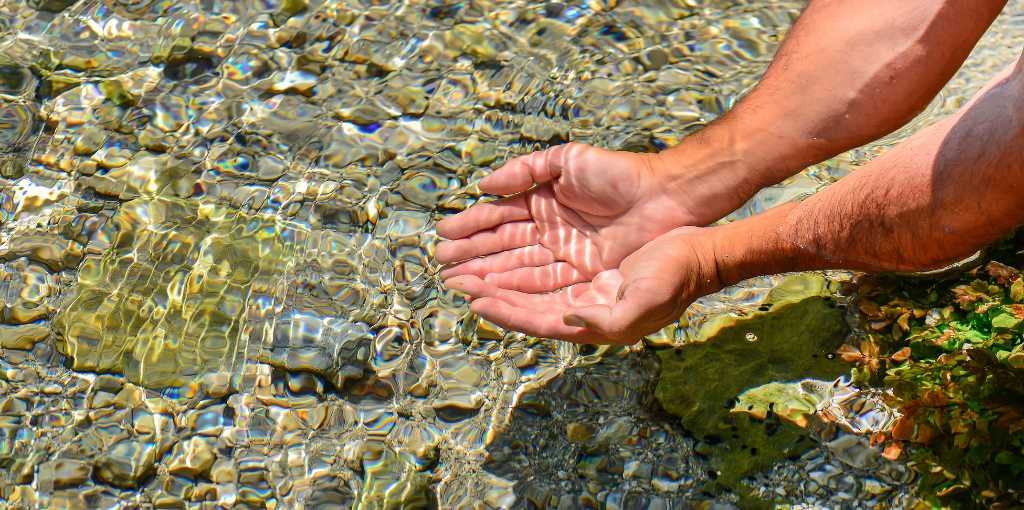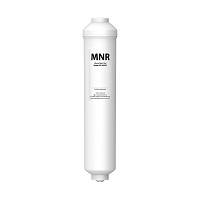We need water to stay healthy. Hydration is an essential requirement for most internal chemical reactions in the human body. That is why experts recommend drinking sufficient water throughout the day.
Thanks to technology, there are various types of water on the market, with spring and purified water being two of the most popular. As a result, consumers often face the all-important decision of choosing between spring water and purified water.
How are they different? Are they both safe for drinking? If not, which is better for your health? Read on to find answers to these questions and others about spring water and purified water.
What is Spring Water?
Spring water is natural water originally sourced from an underground deposit or reservoir of water, also known as an aquifer. Aquifers are often located at or below the earth’s natural water table. When the water in an aquifer finds its way to the ground’s surface, it is collected at the opening of a spring. Alternatively, a borehole can be drilled to collect the water directly from the underground—a method most bottled water brands have adopted.
Spring water is considered a pre-purified water source. The natural pre-purification is due to its passage through geographical formations with filtration capabilities, including clay, sandstone, limestone, and other natural filters. This same passage also adds healthy minerals like potassium, magnesium, and calcium to the water, especially when abundant mineral deposits are along the natural route.
You will find spring water in most stores and supermarkets today packaged as a form of bottled water. However, this packaged spring water has been analyzed and found to meet the strict safety standards for drinking water set by the Environmental Protection Agency and Food and Drug Administration (FDA).
What is Purified Water?
Purified water is obtained from almost any water source out there and then subjected to human-made mechanical and chemical purification processes before it is considered for drinking. These treatment processes ensure the removal of impurities and contaminants, like heavy metals, arsenic, lead, bacteria, viruses, and others, from the water supply.
Some of the purification processes purified water undergoes before it is ready for drinking include coagulation, flocculation, sedimentation, filtration, disinfection, and others. Tap water in most developed countries like the United Kingdom, Canada, and the United States is purified through these processes to make it safe for drinking and domestic use.
Benefits of Drinking Spring Water
Spring water is pre-purified by natural purification processes and materials, which makes it suitable for drinking. Here are some health benefits of drinking spring water:
- Spring water contains rich mineral content, including magnesium, calcium, sodium, and potassium, which can benefit human health. According to WHO, drinking water containing these minerals could prevent osteoporosis and heart problems.
- Spring water is naturally alkaline, with a pH of 8 or 9. This neutralizes the body’s natural pH, creating a balanced environment for most internal reactions.
- The higher pH level also conditions the body to drink more water and stay hydrated.
- Spring water contains no chemicals like fluoride used in treating tap water, considering it is directly obtained from the aquifer. There are also no heavy metals or lead that often leach from pipes.
- Spring water tastes better due to its rich mineral content.
Benefits of Drinking Purified Water
Purified water contains no contaminants or impurities, thanks to the human-made in-depth filtration and purification processes it has undergone. Here are some health benefits of drinking purified water:
- It is safer for drinking than tap water, ensuring you do not have to worry about the illnesses and diseases associated with tap water consumption.
- Purified water can protect you from residual disinfectants used to kill any remaining parasites, bacteria, or viruses in tap water.
- Purified water aids digestion, especially for people suffering from acid reflux. It helps break down food, absorb nutrients, and minimize bloating.
- Drinking sufficient amounts of clean and safe water detoxifies the body by ensuring the kidney functions properly.
- Purified water promotes healthier skin by improving its elasticity and moisture content.
Distilled Water vs Spring Water
Distilled water is obtained from the distillation process, which involves boiling water into vapor and re-condensed into liquid form. This type of water has been adequately processed to filter out contaminants and has been proven to be the purest form of water with a neutral pH of 7. This is why it is often used in sensitive industries like automobile, cosmetic, cleaning and rinsing, and pharmaceutical industries.
Unfortunately, the distillation process also reduces the beneficial salts and minerals. The absence of these minerals means a continuous consumption of distilled water may lead to nutritional deficiency and electrolyte imbalance. This can only be advantageous to people who are living with high blood pressure by helping them maintain their sodium levels.
While spring water is not the purest, it contains sufficient mineral content to help the body avoid electrolyte imbalance, mineral deficiency, and other health implications. Spring water also tastes better and is less expensive and easier to access. However, it is unfit for people with high blood pressure as the sodium content can raise their internal sodium levels.
What’s the Difference Between Purified Water and Spring Water
Unlike spring water, which must be sourced from underground aquifers and allowed to pass through natural filters, purified water is sourced from any underground or surface water body and subjected to human-made filtration processes. It is not pre-purified. Instead, it is subjected to rigorous purification processes like reverse osmosis, flocculation, disinfection, distillation, and others, to make it pure.
While geographical formations and natural filters like sandstone, limestone, and clay filter spring water, human-made filtration processes rely on activated carbon filters, semi-permeable membranes, and ion-exchange technology to remove the contaminants in water. Therefore, purified water is usually contaminant-free irrespective of the source because of the comprehensive treatment it has undergone.
Some of these purification methods and technologies, e.g., reverse osmosis, also remove the mineral content initially present in the water. Just because RO water lacks essential micro elements doesn’t necessarily mean we should avoid drinking it. As long as you maintain a well-balanced diet and replenish your electrolytes after exercising, there should be no issues. Nevertheless, if you’re unable to obtain these micro nutrients through your diet or electrolyte intake, you might want to explore alternative methods to remineralize your RO drinking water.
Conclusion
Drinking spring water is good for your health if you avoid untreated and untested spring water. The downside of drinking spring water is its cost—it is more expensive than purified water in the long run. It is also not the best water type for people on a low-salt diet, considering the sodium levels in the water can exceed their daily consumption limits.
Purified water is safe for drinking and other domestic uses. It is also less expensive, considering you can have an in-house filter system like the reverse osmosis water filter system to transform water from any source into purified water.
Whichever you choose between both water types will depend on your preferences and needs. For instance, people with health conditions like hypertension will be better off drinking purified water. In contrast, people who want the rich taste and health benefits of minerals in their water will prefer spring water.





